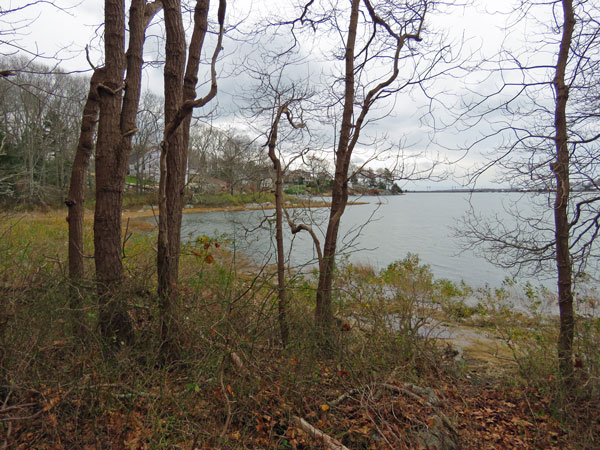
Groton, Connecticut
What a gorgeous day for a walk! First we strolled through a meadow full of blooming buttercups…


Even though Brown-headed Cowbirds are native to North America, many people consider them a nuisance bird, since they destroy the eggs and young of smaller songbirds and have been implicated in the decline of several endangered species.
~ All About Birds website


Nature will bear the closest inspection; she invites us to lay our eye level with the smallest leaf, and take an insect view of its plain. She has no interstices; every part is full of life.
~ Henry David Thoreau
(Excursions)


We climbed until we reached the lookout indicated on the map.


Wouldn’t you know it, we spotted a tiny cemetery right below the lookout. We kept following the trail hoping to find a way down there. A man about our age came up behind us, noticed my camera and asked if I had spotted anything. I mentioned the gravestones and he led us along the path and pointed us to another path and gave us directions on how to get there.



To-day is very beautiful — just as bright, just as blue, just as green and as white and as crimson as the cherry-trees full in bloom, and half-opening peach-blossoms, and the grass just waving, and sky and hill and cloud can make it, if they try. How I wish you were here, Austin; you thought last Saturday beautiful, yet to this golden day ’twas but one single gem to whole handfuls of jewels.
~ Emily Dickinson
(Letter to William Austin Dickinson, May, 1854)



It was a long way around but we finally came to the side path leading off to the right and to the cemetery. Much to my delight there was a “wolf tree” on the corner.

For an explanation of wolf trees see this post: snow melting in the oak-beech forest

Sacred
to the memory of
Starr Chester Esqr.
who was born
Aug 23rd 1759
and died
Feby 12th 1812
This spot contains the ashes of the just
who sought to honour; and betray’d no trust.
This truth he prov’d in every line he trod.
Sacred
to the memory of
Mary Chester
relect of
Starr Chester, Esqr.
Born Nov 11, 1758
Died Jan 12, 1826
May faithful angels guard my moulding dust
until the general meeting of the just.
Then rise triumphant from the dark abode
to realms of light, to love and praise the Lord.
Since I have both Starrs and Morgans (Mary’s maiden name) on my tree I imagine these are distant cousins of mine…
While inspecting the stones two unusual things happened. First, a young man appeared above us at the lookout with a dirt bike. He rode off the edge of the precipice, flew through the air and landed a few feet away from us. As if he did such things all the time, as I’m sure he does.

Another retired couple was a little ways down another path and saw the flight, too. We got to talking and stood there for at least half an hour chatting about all kinds of things. They moved here from Pennsylvania to retire. They love the area, close to the sea. They’ve explored many of the same parks we’ve been exploring.
After we parted ways, we finished following the other trail, stopping to see the wolf tree as we joined it. When we got close to the car I heard and finally spotted another catbird. 🙂 What a lovely ending to a pleasant ramble!

































































































































